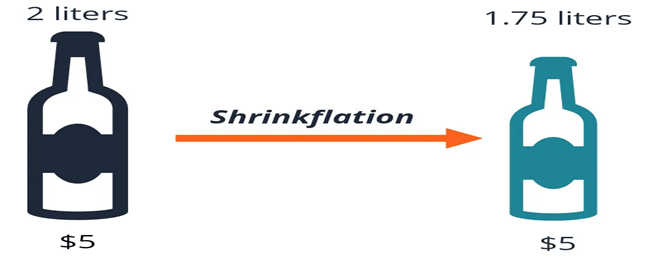Economics
- Prelims – Current Affairs (Economy)

What is Shrinkflation?
- Shrinkflation is the practice of reducing the size of a product while maintaining its sticker price.
- It is a form of hidden inflation.
- Raising the price per given amount is a strategy employed by companies, mainly in the food and beverage industries, to stealthily boost profit margins or maintain them in the face of rising input costs.
- Shrinkflation is also referred to as package downsizing in business and academic research.
- A less common usage of this term may refer to a macroeconomic situation where the economy is contracting while also experiencing a rising price level.
What are the Major Causes of Shrinkflation?
- Higher Production Costs: Rising production costs are generally the primary cause of shrinkflation.
- Increases in the cost of ingredients or raw materials, energy commodities, and labour increase production costs and subsequently diminish producers’ profit margins.
- Reducing the products’ weight, volume, or quantity while keeping the same retail price tag can improve the producer’s profit margin.
- Intense Market Competition: Fierce competition in the marketplace may also cause shrinkflation.
- The food and beverage industry are generally an extremely competitive one, as consumers are able to access a variety of available substitutes.
- Therefore, producers look for options that will enable them to keep the favour of their customers and maintain their profit margins at the same time.
Source: The Hindu
Previous Year Questions:
Q.1) With reference to inflation in India, which of the following statements is correct? (2015)
- Controlling the inflation in India is the responsibility of the Government of India only
- The Reserve Bank of India has no role in controlling the inflation
- Decreased money circulation helps in controlling the inflation
- Increased money circulation helps in controlling the inflation














